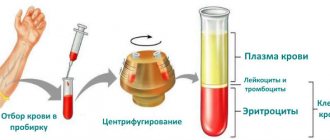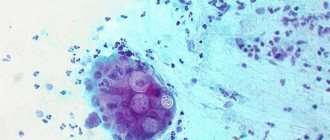Infectious disease experts have calculated that in terms of economic damage, each case of viral hepatitis ranks second after influenza and acute respiratory infections. The incidence remains high, despite a detailed study of hepatotropic viruses, advances in genetic and molecular engineering, and progress in diagnostic methods.
Viral hepatitis is an inflammatory lesion of the liver caused by viruses entering the human body. The disease is characterized by the selective action of pathogens on liver cells, disruption of all functions of the organ, transformation into cirrhosis and cancer. Early detection and treatment can reduce the danger to people and prevent infection of others.
Other causes of liver inflammation
Inflammation of the liver can be caused by viruses, excessive consumption of alcohol or drugs, disruption of the body's metabolic processes of iron or copper, autoimmune diseases, and radiation sickness.
Based on the degree of damage to liver cells (hepatocytes), mild, moderate and severe forms of the disease are distinguished. The viral form of the disease is caused by viral infections that rewire cells to produce new viruses.
https://youtu.be/20eq_ZJNHqk
Some types of hepatitis in chronic form and during the incubation period occur latently, which increases the likelihood of extensive damage to hepatocytes. After the incubation period, hepatotropic viruses begin to multiply inside liver cells.
Among the causes that cause one or another form of hepatitis, both acute and chronic, there are various factors.
Predisposing factors
- Infectious factors: viruses, bacteria, protozoa.
- Toxic factors: endogenous nature (toxins of infectious pathogens, toxins formed during burns) and exogenous origin (alcohol, drugs - ibuprofen, acetylsalicylic acid, tetracycline, paracetamol, methotrexate, phenobarbital, hormonal contraceptives, pesticides, pesticides, plant toxins, food poisons , industrial poisons, allergens, drugs, ionizing radiation).
- Hereditary factors and metabolic disorders.
- Autoimmune factors.
Timely identification of the causes that led to hepatitis, taking into account both the complaints of the patient himself and information about past diseases, bad habits, exposure to hazardous substances, hereditary factors, and laboratory test results, will allow an accurate diagnosis of the form of the disease.
What is hepatitis
Hepatitis is the name given to inflammatory processes affecting the hepatic stroma and parenchyma. By origin, hepatitis can be infectious and non-infectious, as well as specific and nonspecific.
Non-infectious types of nonspecific hepatitis are most often reactive in nature and develop against the background of chronic pancreatitis, acute cholecystitis, gastric and duodenal ulcers.
Specific non-infectious hepatitis is usually caused by taking hepatotoxic drugs (toxicoallergic or drug-induced hepatitis). Also, such hepatitis can be caused by chronic alcoholic liver damage.
Nonspecific types of infectious hepatitis can be a manifestation of other diseases, the causative agent of which has a tropism for liver tissue. Nonspecific infectious hepatitis can develop against the background of infectious mononucleosis, pseudotuberculosis, adenoviral infection, etc.
For reference. A separate group of liver pathologies of an infectious nature includes specific types of viral hepatitis, caused by deoxyribonuclein-containing and ribonuclein-containing viruses and manifested by infiltrative-degenerative lesions of the liver tissue.
Viral hepatitis - etiology
At the moment, ten specific viruses are known that contribute to the development of hepatitis.
Of these, the most significant and common are viral hepatitis B, A, E and C.
Based on the duration of the infectious process, viral hepatitis is divided into acute and chronic.
For reference. According to the mechanisms of infection, forms of viral hepatitis (VH) are distinguished with fecal-oral (types A and E) and VH with blood-contact (serum) (types B and C) pathogen transmission mechanisms.
The main symptoms of viral hepatitis are:
- intoxication;
- bile stagnation;
- icteric tint of the skin and mucous membranes;
- itchy skin;
- hepatomegaly;
- darkening of urine and lightening of stool.
Viral hepatitis ICD10 code:
- B15 for viral hepatitis A;
- B15.0 for CHA, accompanied by the development of hepatic comas;
- B15.9 for CHA, not accompanied by the formation of hepatic comas;
- B17.2 for VG E;
- B17.1 acute viral hepatitis C.
Acute viral hepatitis B is coded as B16. Next, an additional disease code is indicated:
- 0 – acute viral hepatitis with delta agents and the formation of hepatic comas;
- 1- for acute viral hepatitis with the addition of D-agents (delta-agents), but without the formation of hepatic lumps;
- 2- for VH without the addition of D-agents, but with the development of hepatic comas;
- 9- for VH B, occurring without the addition of D-agents and without hepatic coma.
Treatment of viral hepatitis is prescribed individually and depends on the types and severity of hepatitis.
Types of pathology
Regardless of the reasons that initiate hepatitis, inflammation covers the entire liver, leads to damage to the tissue that forms it, the parenchyma, and, as a consequence, to disruption of its functioning.
Classification
- Infectious form. Caused by hepatitis viruses A, B, C, D, E, F, G, cytomegalovirus, herpes simplex virus, bacteria (leptospira, treptonema pallidum, Brucella), protozoa (giardia, coccidia). Hepatitis viruses differ in their biological properties, modes of transmission, severity of the diseases they cause, distribution, and resistance to environmental conditions.
- Toxic form, including alcoholic, drug (or drug) hepatitis; hepatitis caused by the action of various chemical compounds and poisons.
- Alcoholic hepatitis develops with chronic alcohol abuse due to the toxic effects of alcohol and acetaldehyde (a metabolic derivative of alcohol) on the liver and hepatocytes (liver cells). In addition to direct damage to hepatocytes, there is a slowdown and then inhibition of the liver regeneration process. Alcoholic hepatitis can occur in two forms: in a reversible form, when cure is possible (provided that alcohol is completely abstained and appropriate treatment and diet are followed), and in a progressive form. With continued alcohol intake, a deterioration in the condition is observed; hepatocytes undergo significant impairments, which lead to their necrosis, the death of normal liver tissue and its replacement with fibrous tissue, and the development of severe damage - liver cirrhosis.
- Drug-induced hepatitis is caused by a toxic effect on liver cells of either the drug itself or the products of its metabolism in the body. There are over 1000 drugs known to cause liver damage. With timely diagnosis of drug-induced hepatitis, discontinuation of the drug (or drugs) that caused it, and proper treatment, the patient recovers. Preventive measures to prevent drug-induced hepatitis include excluding uncontrolled self-medication and prescribing drugs exclusively by a doctor, taking into account possible side effects of the drug. If you need to take a medication for a long time that has side effects, you should regularly check the condition of your liver and its function.
- Hepatitis, caused by various chemical compounds and poisons, develops due to damage to liver cells. It occurs either in a chronic form with repeated exposure in small doses, or in an acute form when a large dose of a substance enters the body. Among the most dangerous compounds are arsenic, insecticides, pesticides, phosphorus, phenols, and industrial poisons.
- The autoimmune form of hepatitis is characterized by liver destruction, which occurs due to the action of the body's own immune system. The reason for the failure of immune function in this form of hepatitis is unknown. As a rule, the disease is asymptomatic, is detected when complications occur, and progresses rapidly, resulting in cirrhosis of the liver. It is noted that the disease occurs more often in women. There are known cases of self-healing of patients with autoimmune hepatitis.
- Hepatitis of unknown etiology. This group includes liver diseases with unspecified confirmation of a viral nature, as well as unspecified chronic hepatitis.
All forms of hepatitis, regardless of the cause that caused it, progress rapidly without appropriate treatment and can lead to irreversible changes in the liver.
From the proposed video program Live Healthy, learn more about hepatitis C.
Among the different types of hepatitis, viral hepatitis is the most widespread, as well as the severity of its consequences for society.
According to the existing classification, the group of infectious hepatitis that develops as a result of the damaging effects of a viral infection includes hepatitis types A, B, C, D, E, F, G.
Hepatitis A
- The infectious factor is an RNA virus.
- The virus exhibits sufficient resistance to external factors - at room temperature it persists for at least several weeks, at 4 degrees for several months. The virus is inactivated by boiling after five minutes; in chlorinated water it remains viable for at least half an hour.
- It occurs in both mild and severe forms.
- Most patients suffer from the disease in an asymptomatic form.
- It is transmitted through the use of water and food contaminated with feces of infected patients, through direct contact with a sick person, or through violation of personal hygiene rules.
- Does not lead to chronic hepatitis.
- Only sometimes it ends in death.
- In areas with a large spread of the virus, the disease becomes epidemic.
- One of the most widespread intestinal infections.
- Hepatitis A is known as “jaundice”, “Botkin’s disease”, “dirty hands disease”.
Hepatitis B
Infectious hepatitis is often caused by hepatotropic viruses, sometimes by cytomegaloviruses, rubella viruses, herpes simplex viruses, HIV and others.
Depending on the methods of infection, the intensity of the negative impact on the liver and the degree of damage to the organ, several types of this disease are distinguished: A, B, C, D, E, G.
Infectious hepatitis A (Botkin's disease) is the most common type of this group of diseases. It is transmitted by the fecal-oral route.
https://youtu.be/jzu062oQkvg
The degree of infection by the disease reaches 100%. From the moment of infection to the detection of the first symptoms, it can take 7-45 days.
If you consult a doctor in a timely manner, the outcome of treatment for Botkin's disease is very favorable.
Hepatitis B is transmitted sexually, through blood, through the use of unsterile syringes. This type of infectious hepatitis has an incubation period of 6 months. In people with hepatitis B, the liver and spleen become enlarged and their normal functioning is impaired.
Hepatitis C can be considered a severe type of the disease. The disease is transmitted from an infected person through blood. Over time, it transforms into liver cancer or cirrhosis. The fatality rate is very high. Patients with hepatitis C require a special approach to treatment.
Other types of hepatitis are derivatives of the diseases listed above, but they all lead to inflammation and destruction of liver tissue. In the absence of proper treatment, infectious hepatitis progresses to a difficult-to-treat chronic stage.
When several types of hepatitis are combined, hepatic coma can develop at lightning speed, leading the patient to death.
Non-infectious hepatitis is classified based on the factor that provoked the development of the disease.
The following types of non-viral hepatitis are distinguished:
- alcoholic - prolonged (over several years) consumption of alcoholic beverages, as a result of which the natural functioning of hepatocytes is disrupted;
- toxic - the poisonous effects of medications, alcohol substitutes, heavy metals (arsenic, mercury).
- metabolic - associated with genetic disorders, for example, Wilson-Konovalov disease;
- autoimmune - destruction of hepatocytes by the body's antibodies;
- reactive - develops against the background of other disorders, for example, as a result of pancreatitis, peritonitis, etc.;
- primary biliary - a violation of the outflow of bile, the excessive accumulation of which leads to damage to liver cells.
There are toxic, radiation, autoimmune, primary biliary, reactive, non-alcoholic types of pathology. The appearance of toxic hepatitis is caused by liver damage due to exposure to medications, alcohol, and toxic substances.
The development of the disease is determined by:
- uncontrolled use of medications: sulfonamides, antiviral, antituberculosis, antipyretics, anticonvulsants;
- exposure to the body of poisons such as arsenic, pesticides, aldehydes;
- alcohol abuse;
- harmful effects of plant poisons.
Radiation hepatitis refers to the development of inflammatory-necrotic changes in the liver due to exposure to high doses of radiation. This disease is rare, but it can affect absolutely anyone, regardless of gender and age.
The main reasons for the development of the disease include:
- radiation therapy for malignant neoplasms;
- irradiation of the body due to accidents at nuclear power plants, the use of atomic weapons.
- Alcoholic hepatitis. One of the most common causes of non-infectious hepatitis is chronic alcoholism. According to statistics, 20% of people who abuse alcohol develop hepatitis after 5-6 years of this lifestyle. As a result of alcoholic hepatitis, complete destruction of hepatocytes is observed due to impaired metabolism within the cells.
Causes
Various natural or synthetic agents (compounds in plants, chemicals or drugs) that are toxic to the liver can cause non-infectious hepatitis.
Inflammation damages the hepatocyte cells that make up 80% of the liver. They are responsible for metabolism, detoxification and inactivation of toxins in the blood.
Hepatocytes remove toxins from the blood and convert them into substances that can be excreted through the kidneys in urine or through stool in bile.
Non-viral hepatitis is a common problem due to the increase in dietary supplements with side effects on the liver. According to research funded by the US National Institutes of Health (NIH), between 2003 and 2011, herbal and dietary supplements caused 18% of all drug-related liver damage.
Energy drinks such as Monster Energy, Rockstar and Red Bull contain high doses of B vitamins such as niacin (vitamin B3). In large quantities, niacin is toxic to the liver. There have been many reports of people who have developed non-viral hepatitis after consuming excessive amounts of energy drinks.
https://youtu.be/7eC02DffM-E
Signs of hepatitis
Non-viral liver diseases often develop over years and occur in an asymptomatic, latent form. An acute course is rare; sometimes signs of hepatitis appear already at the stage of serious organ damage. In this case, the patient experiences classic symptoms:
- Pain in the right hypochondrium.
- White feces and dark urine.
- Nausea, loss of appetite.
- Ailments, weakness.
- Sometimes the temperature rises to 38-39°C.
- Jaundice: yellowing of the sclera, less commonly the skin.
Changes in liver cells and reflected in symptoms
Damage to liver structures by viruses is manifested by typical cytolytic, cholestasis and immunoinflammatory syndromes. The process of cytolysis (destruction of hepatocytes) is caused by direct exposure to the virus or the resulting antibodies.
When viruses enter liver cells, they disrupt all metabolic processes and inhibit antioxidant systems. As a result, the membrane of hepatocytes becomes permeable, enzymes and potassium leave the cells through it. They are replaced by sodium and calcium.
The pattern of cytolysis differs for different types of viral exposure
This promotes water retention, cell swelling, disrupts the acid-base balance, and stops the biochemical process of energy production. The cessation of the activity of enzyme systems leads to disruption of all types of metabolism and disrupts the work of removing intoxication from incoming toxic substances.
Markers of the cytolysis process are considered to be the growth in blood serum of such intracellular enzymes as alanine aminotransferase (ALAT), cholinesterase, aspartate aminotransferase (AST), arginase, and serum iron. The degree of disturbance of pigment metabolism and secretory function is judged by the amount of free bilirubin.
Diagnosis of hepatitis C
Normally, hepatocytes capture free bilirubin, “bind” it and excrete it into bile. Hypoalbuminemia (low protein content in the blood) indicates suppression of the synthesis function.
Infection contributes to disruption of the formation of coagulation factors, especially prothrombin, substances that affect coagulation processes and fibrinolysis.
Therefore, infectious hepatitis is accompanied by hemorrhagic syndrome with massive hemorrhages and bleeding. With severe cytolysis, lysosomes, which are the reservoir of proteolytic enzymes, die in hepatocytes. Therefore, with a massive release of hydrolases from the cells, self-corrosion and destruction occur.
The result is acute liver failure. Stagnation of bile (cholestasis) reflects a decrease in secretory function and cytolysis. In addition to bilirubin, bile acids, cholesterol, copper, the enzymes alkaline phosphatase and gamma-glutamyl transpeptidase are released into the blood.
The severity of intoxication does not always increase in proportion to the level of bilirubin:
- The initial (pre-icteric) period reflects the phase of spread and accumulation of the virus in the blood. Manifested by increased temperature and general signs of malaise.
- At the height of the disease, the main role is given to the process of cytolysis with a violation of counteraction to intoxication. Clinically, this is indicated by nausea, loss of appetite, vomiting, and lethargy.
- The addition of acute liver failure is indicated by specific dysfunctions of the central nervous system in the form of hepatic encephalopathy.
How to recognize and treat the disease?
The most common manifestation of the disease is yellowing of the eyes, mucous membrane of the palate and skin in sick people. Along with these symptoms, the urine may darken and the stool may become very light.
However, it also happens that the disease occurs without jaundice, but there are problems with stool, appetite, general depression, nausea, vomiting, discomfort in the right side and increased body temperature.
If you have any of the listed signs, then you should definitely visit a specialist and not self-medicate, which can lead to a sad outcome. The sooner therapy begins, the less the liver will suffer, because the virus leads to metabolic disorders in the liver tissues.
Important! It is worth remembering that the disease is transmitted through sexual contact, so you should always protect yourself and not be promiscuous.
Prevention
No one is immune from hepatitis, but you can reduce your chance of contracting the disease. If we are talking about a non-infectious variety, you should adhere to the following tips:
- You need to know the limit in alcohol. It may be difficult to completely eliminate the consumption of “fiery liquid”, but limiting yourself is quite possible.
- You should only take medications that are prescribed by your doctor. Under no circumstances should you self-medicate, especially if the medications are antibiotics. Only a doctor is able to choose the right medicine and, most importantly, the dosage for each patient based on the characteristics of his body.
- You should eat right and watch your food intake. It is better not to eat “dubious” plants, and even less so poisonous berries and mushrooms.
It is necessary to maintain a strong immune system in order to quickly cope with diseases before complications arise, because non-viral hepatitis often forms when the body’s defenses are weakened, and it is not contagious. To do this, you need to consume enough vitamins and minerals, lead a healthy lifestyle and move more.
https://youtu.be/oj1mksiumQQ
Symptoms
https://youtu.be/byqu26ULfqU
A manifestation of a non-infectious acute process is inflammation of the liver, characterized by symptoms such as nausea, pain, jaundice, weakness, dark urine. A viral disease can begin with a cough and runny nose, aches in the joints and muscles, headache, and fever.
Then the urine darkens, the feces become light. If jaundice develops, the skin and whites of the eyes turn yellow.
With hepatitis B and C, the onset of the disease is smoother, with a slight rise in temperature, weakness, and lack of appetite. Then, over several days, the symptoms increase, pain in the hypochondrium, nausea and vomiting appear.
Symptoms of hepatitis may be similar to signs of acute respiratory viral infections and intestinal infections, so a doctor can make an accurate diagnosis only after special studies.
To identify the disease, the patient may be prescribed the following diagnostic methods:
- blood tests for antibodies and antigens, enzyme levels, general and biochemical tests;
- PCR and ELISA methods, ultrasound;
- liver biopsy.
During treatment, in order to reduce the load on the affected liver, it is necessary to give up alcohol, follow a diet, and avoid stress and physical overload. To combat viral species, interferon is used, which is an effective treatment.
For hepatitis A and E (unlike B, C, D and G), antiviral drugs are not used. If there is an adequate level of immunity, the body can independently get rid of the virus.
With hepatitis A, E, and also in many cases with form B, the virus is removed from the body and the sick person recovers. With type C (sometimes with B), the virus can remain in the liver, causing hepatitis to become chronic.
The disease can be prevented, so it is important to have knowledge of what hepatitis is. To prevent the disease, you should lead a healthy lifestyle, maintain personal hygiene and food hygiene. An effective means of prevention (especially types B and A) are preventive vaccinations.
If you suspect a disease, you must urgently visit a doctor and conduct a diagnostic examination, since if hepatitis is detected in a timely manner, the prognosis for treatment is favorable.
ogepatite.ru
As a rule, the symptoms of hepatitis are more pronounced in the acute form of the disease than in the chronic form. The manifestations of symptoms largely depend on the cause of hepatitis.
Typically, in adult patients, the manifestation of symptoms is more pronounced compared to those in children. In the chronic form of hepatitis, characteristic symptoms are often absent or mildly expressed.
Symptoms of hepatitis
- Jaundice is a set of manifestations including yellowing of the skin (from almost imperceptible to a bronze tint), mucous membranes and sclera of the eyeball, darkening of urine, discoloration of feces
- Characteristic pulling and aching painful sensations in the area of the right hypochondrium, sometimes spreading to the shoulder blade and shoulder on the right side
- Increased body temperature
- Weakness, fatigue, lack of appetite
- Enlarged, sensitive liver
- Nausea, vomiting
- Decreased performance
Despite these signs of the disease, recognizing hepatitis is not always so easy. After all, sometimes it occurs in an asymptomatic form.
The appearance of the first signs of infectious hepatitis requires immediate contact with a hepatologist.
The main symptoms of the disease are:
- yellowing of the sclera and mucous membranes;
- pain or feeling of heaviness in the right hypochondrium;
- darkening of urine;
- stool discoloration;
- nausea, vomiting;
- temperature increase;
- frequent mood changes;
- general weakness.
When examining a patient, a doctor can easily determine liver pain or an increase in its size. But in some cases, the symptoms of infectious hepatitis are smoothed out, and the icteric stage is absent.
To make a correct diagnosis, it is necessary to carry out a number of diagnostic measures, which, thanks to modern techniques and the latest equipment, will allow us to identify the disease at the earliest stages of development. Patient examination includes:
- Ultrasound of the liver, and, if necessary, MRI or CT;
- blood chemistry;
- PCR methods;
- immunological studies.
It should be noted that in the presence of a disease, during the destruction of the liver, a large number of liver enzymes are released into the patient’s blood: AST, ALT. An increased level of bilirubin in the blood indicates the presence of the icteric stage of the disease.
A biochemical blood test shows how widespread the infection is in the human body. PCR methods are used to determine the type of pathogen, and during immunological studies, antibodies to them are determined.
/
All forms of non-infectious hepatitis have similar symptoms.
As a rule, the disease manifests itself:
- nausea;
- indigestion (diarrhea, flatulence);
- discomfort and pain in the right hypochondrium, which intensifies with intense physical activity.
The manifestations of all types of disease are similar, since all pathologies affect one organ. But at the same time, the symptoms will still differ depending on the type. The course of hepatitis caused by the action of toxins is practically asymptomatic. It is usually detected during examination. The disease is characterized by:
- the appearance of sharp pain in the abdomen on the right;
- malaise;
- decreased performance;
- severe itching of the skin;
- lack of appetite;
- joint pain;
- bleeding (from the nose, gums);
- increase in body temperature to 38 degrees;
- the appearance of small hemorrhages on the dermis;
- yellowing of the skin, sclera.
Radiation hepatitis is characterized by severe itching of the skin, up to the appearance of wounds; yellowness of the skin, sclera; pain in the abdomen on the right.
Primary biliary hepatitis is characterized by:
- skin itching;
- decreased performance, malaise, daytime sleepiness, increased fatigue;
- significant reduction in body weight;
- tendency to bruise;
- arterial hypotension;
- telangiectasia (small hemorrhages on the skin);
- redness of the skin of the palms and feet;
- enlargement of the parotid salivary glands;
- yellowing of the dermis, sclera and oral mucosa;
- leukonychia (appearance of small white spots on the nail plates);
- thickening of the fingertips;
- enlarged spleen.
As for reactive hepatitis, most often it is also practically asymptomatic. Sometimes it happens that there are no symptoms at all.
The main symptoms of the disease include: weakness, chronic fatigue, headaches, pain in the abdomen on the right, nausea, decreased appetite, yellowing of the skin and sclera, darkening of urine and discoloration of stool.
With non-alcoholic steatohepatitis, there are complaints of discomfort in the abdominal cavity, pain in the right hypochondrium, malaise, yellowness of the skin, mucous membranes and sclera.
In the early stages, hepatitis is difficult to diagnose, since at this stage there are practically no symptoms of the disease. In addition, if they appear, they may not be associated with hepatitis. The immediate cause of the disease is a fundamental factor in how quickly the disease progresses.
Symptoms of hepatitis include the following: Against the background of general malaise and weakness, pain in the joints and muscles is observed. The skin has a jaundiced tint. Appetite disappears, vomiting and nausea and fever appear.
It should be noted that liver cells can not only be damaged by harmful substances and toxins, but can also be destroyed as a result of the influence of cells of the immune system.
https://youtu.be/Aew0k7-x2nY
As a result, external changes in the liver are recorded - an increase in size, as well as unpleasant sensations of heaviness in the stomach, nausea, accompanied by upset stool.
Etiology and epidemiology
The causative agent of HAV is an RNA virus belonging to the genus Hepatovirus, family Picornaviridae. In most patients with HAV, risk factors for developing infection cannot be identified. Known common risk factors for developing the disease include:
- Contact with a person with HAV.
- Occupational risk (for example, working in a children's group).
- Travel abroad.
- Homosexuality.
- Parenteral drug use.
Cases of HAV are reported throughout the world. The highest level of seropositivity (that is, a high level of identification of antibodies to HAV - anti-HAV) is observed among the adult population of Africa, Asia and South America, where the incidence of HAV is the “norm” among children, the infection is usually asymptomatic. Manifest cases among the population of developing countries are rarely recorded. The most important factors that lead to high morbidity rates among children in developing countries are poor sanitation and lack of reliable clean water resources.
A large-scale HAV epidemic described in Shanghai in 1988 was associated with the consumption of shellfish by the population and, according to the World Health Organization, affected about 300 thousand people. The age of the majority of hospitalized patients was 20-40 years. The older the patients with HAV were, the more often deaths from fulminant hepatitis were recorded. At the same time, an increase in the age of patients was associated with a decrease in morbidity. The lower prevalence of HAV among older people was likely due to immunity from previous disease rather than to a decrease in risk factors.
Diagnosis and treatment
Diagnosis of hepatitis, which is of a viral nature, is carried out on the basis of a comprehensive analysis of data:
- Obtaining data about the patient, history of past illnesses, living conditions, heredity, bad habits (alcohol, smoking, drugs), presence of tattoos.
- Examination of the patient, palpation of the liver, presence or absence of characteristic symptoms in the patient, patient complaints.
- General blood analysis.
- Blood test for the functional state of the liver (bilirubin, albumin, prothrombin time), for the presence of damage and inflammation of the organ.
- An analysis to determine antibodies to a specific type of virus to confirm the fact of infection.
- Conducting a polymerase chain reaction test to identify the virus.
- Ultrasound analysis of the liver (ultrasound) to check the state of structural changes in the organ.
- If necessary, computed and magnetic resonance imaging, liver biopsy.
Based on the data obtained, the preliminary diagnosis is clarified, data on other concomitant forms of hepatitis of a non-infectious nature are excluded or confirmed.
Like other types of hepatitis, form G is quite difficult to diagnose. To do this, the doctor must perform the following procedures:
- external examination and questioning of the patient;
- blood chemistry;
- ELISA and PCR research methods will help to detect not only the presence of the hepatitis virus in the blood, but also its amount per 1 ml, which will tell about the extent of the spread of the disease;
- If previous diagnostic methods have not yielded results, a biopsy is performed.
Difficulties in diagnosis are associated not only with the fact that the symptoms of the virus do not appear immediately, but also with its periodic disappearance from a blood test. Doctors were able to establish that hepatitis type g can periodically disappear from peripheral blood tests, which significantly complicates diagnosis.
Another feature of it is its distribution not only in liver tissue, but also in lymphoid tissue. As mentioned above, a biochemical blood test can be used to track an increase in the amount of ALT and AST in the blood. This analysis also gives an idea of the level of bilirubin and the activity of liver transaminases.
Since the symptoms of hepatitis G are similar to those of the viral form C, doctors sometimes have to perform a biopsy. It is important to find out in advance whether a person has contraindications to such a procedure.
A biopsy is performed using a special needle, which removes liver tissue. It is then analyzed under a microscope, after which an accurate diagnosis can be made.
Treatment is carried out using the drugs “Interferon” and “Alpha-interferon”. In some cases, Anaferon is added to them. The dosage is prescribed individually, it all depends on the degree of development of the disease and the presence of certain symptoms.
Very often, hepatitis C and G viruses are combined with each other, and in this case, complete healing can be achieved only in 18–20% of cases. In all other cases, the disease enters a chronic stage with possible outbreaks in the future.
If hepatitis C does not join, then the probability of eliminating the virus increases to 50%. During treatment, it is necessary to carry out a PCR blood test at all times to assess the effectiveness of drug therapy.
It is quite difficult to identify this disease in the early stages of development, because there may be no symptoms. In order to make an accurate diagnosis, a biochemical blood test is required, which determines how active liver enzymes are and what the concentration of bilirubin is.
A general analysis of urine and blood is also necessary. In order to exclude the viral nature of the disease, the blood is examined for the presence of antibodies to hepatitis A, B, and C viruses. In addition, an ultrasound examination of the liver and gall bladder is indicated.
https://youtu.be/zdt4Nfw1fWk
Detection of pathology should only be carried out by a qualified specialist. In order to identify autoimmune hepatitis, in addition to a physical examination, analysis of life history and disease, the following is prescribed:
- clinical and biochemical blood analysis;
- coagulograms;
- immunological blood test;
- coprograms;
- analysis of feces for eggs of protozoa and worms;
- Ultrasound;
- elastography;
- liver biopsy;
- blood test for the presence of hepatitis viruses;
- CT (computed tomography);
- esophagogastroduodenoscopy.
To identify radiation hepatitis, first the fact of damage to the body by radiation is established. Only after this is a biochemical blood test prescribed (for bilirubin, total protein, transaminases); laparoscopy, biopsy (to determine the structure of the liver); Ultrasound; MRI (magnetic resonance imaging).
To clarify the diagnosis of primary biliary hepatitis, in addition to examination, questioning and assessment of the mental state, a clinical and biochemical blood test is prescribed; coagulograms; coprograms, general urine analysis; Ultrasound, computed tomography, esophagogastroduodenoscopy, liver biopsy, elastography.
Diagnosis of reactive hepatitis involves testing blood for viral infections, as well as performing ultrasound, MRI, and CT.
To diagnose non-alcoholic steatohepatitis, a blood test (clinical, biochemical), computed tomography, MRI, and ultrasound are performed.
The main method for diagnosing toxic hepatitis is a biochemical blood test, in which the indicators of bilirubin (total and direct), AST, and ALT are significant. In addition, a general blood and urine test, coagulogram, and ultrasound are prescribed. Computed tomography and MRI, liver scintigraphy and biopsy are often performed.
The symptoms of the disease are directly related to the cause of the disease. Some types of hepatitis are accompanied by completely uncharacteristic manifestations, and the disease may not manifest itself for a long time.
The initial stage of diagnosing the disease involves interviewing and examining the patient by a doctor. At the next stage, it is necessary to conduct laboratory tests: general blood test, prothrombin index, fibrinogen, bilirubin, total serum protein, cholesterol, tests for the presence of hepatitis viruses in the body, ferritin and transferrin, copper.
In some cases, additional tests may be ordered, such as an abdominal ultrasound, liver biopsy, or retrograde cholangiography.
Routes of transmission of parenteral hepatitis
Viruses that cause parenteral hepatitis belong to different families. But they are united by one fact: they are very tenacious in the external environment. For example, the hepatitis B virus can remain alive for three to six months at room temperature. And when frozen (at a temperature of -20 degrees) it lasts for more than ten years. Hepatitis viruses are also resistant to most disinfectants.
The source of infection is virus carriers, as well as all patients with parenteral viral hepatitis in any form of the disease. That is, patients with both acute and chronic viral hepatitis pose a danger. Moreover, a person becomes infectious from the middle of the incubation period. This is the most dangerous situation, since during this period the disease does not yet manifest itself. A person does not even know that he is sick and now certain measures must be taken so as not to infect others.
Parenteral hepatitis B and C viruses are found in all biological fluids of the body, but in maximum concentration in blood and semen. To infect a person, a small drop of infected blood is enough, not even visible to the human eye.
Based on this, the following transmission routes are distinguished:
• Parenteral - during surgical and dental procedures, during tattooing, manicure, intravenous injections using contaminated instruments;
• Sexual - during sexual contact with an infected partner without using condoms;
• Vertical - infection of a child from an infected mother in utero or immediately during childbirth;
• Contact-household - when using razors, toothbrushes, manicure accessories of an infected person.
When communicating, shaking hands when meeting, hugging and kissing, just like with HIV, the viral infection is not transmitted.
According to modern data, about 240 million people around the globe are chronically infected with hepatitis B, and approximately 150 million people suffer from hepatitis C! It is not only injection drug addicts or people with promiscuous sex who get hepatitis. Given the widespread prevalence of the infection, other people are also at risk when undergoing routine dental and manicure procedures. When visiting nail salons in general, you need to be very careful, because as practice shows, not all masters process the tools properly.
History of the disease and mode of transmission of the virus
The disease was first identified and described in 1966, when surgeon George Barker suffered from an infectious liver disease. The strangest thing was that doctors could not identify the disease and make an accurate diagnosis.
After 9 years, it was discovered that the introduction of a virus taken from Dr. Barker’s blood to monkeys leads to the appearance of an acute form of hepatitis in the animals. In 1996, two independent groups of scientists identified a new virus and gave it a detailed description.
https://youtu.be/Jtv1La4tkWY
Viral hepatitis g can be diagnosed in the following cases:
- when abusing strong drugs that are administered intravenously;
- when transfusing contaminated blood or using undisinfected instruments;
- infection also occurs during hemodialysis or blood transfusion;
- transmission can occur during sexual contact;
- If the mother has had hepatitis C, there is a high probability that the hepatitis G virus will be transmitted to the fetus.
Most often, the disease is transmitted through blood, and the likelihood of infection through transfusion is especially high. In 50% of cases, patients with hepatitis G become infected through transfusion of infected blood. In this case, the disease is acute, and the incubation period takes no more than 7–10 days.
Acute and chronic viral hepatitis C
For reference. Hepatitis C includes infectious pathologies of the liver, accompanied by contact transmission of the virus and occurring cyclically, with frequent chronicity of the disease, cirrhotic complications and the formation of hepatocellular carcinomas.
The only sources of HCV viral particles are patients with hepatitis C.
Transmission of viral particles can be carried out through sexual, transplacental, blood transfusion, etc.
The natural level of susceptibility of patients to hepatitis C pathogens is high, but the risks of infection are largely determined by the infectious dosage (the amount of virus entering the body).
Most often (about eighty percent), hepatitis C is anicteric. Acute forms of CH are recorded extremely rarely. As a rule, during a routine examination of donors.
Attention. The first symptoms of the disease are asthenovegetative symptoms. Patients are concerned about severe lethargy, weakness, and fatigue. As a rule, patients are concerned about dyspeptic disorders.
There may be nausea, vomiting, bloating, dull pain in the abdominal area, bowel disorders (constipation or diarrhea), and loss of appetite.
Itching of the skin and joint pain (arthralgic symptoms) may occur.
Acute forms of hepatitis C usually occur in mild or moderate forms. Fulminant hepatitis is reported extremely rarely (usually in patients with HIV or concomitant liver pathologies).
With the development of chronic forms of CH, progression of liver damage and the development of severe forms of cirrhosis are possible.
It should be noted that hepatitis C (more often with chronic infectious and inflammatory processes) is characterized by the frequent appearance of extrahepatic symptoms.
Such patients may experience:
- mixed cryoglobulinemia;
- the appearance of lichen planus;
- development of rheumatoid symptoms;
- mesangocapillary glomerulonephritis;
- late cutaneous forms of porphyria;
- idiopathic thrombocytopenia;
- thyroiditis;
- development of Sjögren's syndrome;
- B-cell forms of lymphomas, etc.
Treatment methods
There are no specific treatments for certain types of infectious hepatitis. Treatment includes antiviral drugs in combination with interferon and ribavirin.
Treatment is aimed at creating the most gentle conditions for the liver, to increase the regenerative ability of hepatocytes.
Patients with hepatitis, especially in the acute form of the disease, require hospitalization and bed rest.
To alleviate the condition, it may be suggested to apply a warm compress to the liver area and drink plenty of fluids.
In the case of chronic forms of hepatitis, treatment is aimed at preventing the disease from progressing to cirrhosis and liver cancer.
An indispensable condition is adherence to a diet, avoidance of alcoholic beverages, careful selection of medications for the treatment of concomitant diseases, eliminating side effects and damaging the liver.
Treatment of infectious hepatitis should be comprehensive and comprehensive. Depending on the type of hepatitis and the advanced stage of the disease, it can be therapeutic or surgical.
Therapeutic treatment includes:
- detoxification therapy to eliminate symptoms of poisoning;
- hepatoprotectors to protect and restore liver cells;
- vitamins.
Non-viral hepatitis is much less common than viral hepatitis. Therefore, if the doctor suspects liver inflammation, he will first rule out the infectious nature of the disease. To do this, blood tests are performed, and in extreme cases, a liver biopsy.
In case of toxic hepatitis and other reactive types, first of all, the factor provoking the disease is eliminated - alcohol is excluded, medication is suspended, etc. After this, symptomatic treatment is prescribed:
- Adsorbents.
- Hepatoprotectors (it is worth saying that this group of drugs is very popular, but today there are no clinical studies proving their effectiveness).
- B vitamins (B1, B2, B6), as well as vitamins A, C, D.
- Choleretic agents.
- Enzymes.
To treat and prevent hepatitis in the future, a person should follow a strict diet (5th table according to Pevzner). Without this condition, therapy for non-viral inflammation is ineffective. Fatty meats, fatty fish, yellow cheeses, chocolate, custards, smoked meats, semi-finished products, and preserves are excluded from the patient’s diet.
For autoimmune hepatitis, the doctor may additionally prescribe glucocorticosteroids, in particular prednisone. In this case, treatment is carried out not by a hepatologist, but by a rheumatologist.
https://www.youtube.com/watch?v=05vf4bWp3d8
Judging by the fact that you are reading these lines now, victory in the fight against liver diseases is not yet on your side... And have you already thought about interferon therapy? This is understandable, because hepatitis C is a very serious disease, because proper functioning of the liver is the key to health and well-being.
Nausea and vomiting, a yellowish or grayish tint to the skin, bitterness in the mouth, darkening of the color of urine and diarrhea... All these symptoms are familiar to you firsthand.
The primary task in the treatment of hepatitis is to neutralize the negative effects on liver cells. It is also necessary to prevent the transformation of the acute form of the disease into a chronic one.
During treatment, it is necessary to regularly visit the doctor, strictly follow all instructions and adhere to the correct regimen.
The following are used as preventive measures:
- complete exclusion of alcohol;
- taking medications only as prescribed by a doctor, according to the instructions;
- if contact with toxic substances is necessary, use protective equipment;
- diet and proper nutrition.
healthmatka.ru
Complications
The doctor judges recovery from an acute form of hepatitis or remission of chronic hepatitis using immune tests and biochemical tests. Complications include:
- functional and inflammatory diseases of the biliary tract;
- acute liver failure with the development of a coma (fatal in 90% of cases);
- transition to a chronic course (mainly hepatitis C, observed in 70% of patients) with the subsequent development of cirrhosis or cancer;
- Liver cirrhosis occurs in 1/5 of all patients, except for hepatitis C; it can be caused by hepatitis B in combination with D or isolated.
Severe types of damage to the body due to the exclusion of liver function cause serious concern and require prompt identification of viral hepatitis with full treatment. The prevalence can only be reduced through preventive measures on a national scale.
Preventive measures
In most cases, the prognosis for hepatitis G is positive: by noticing the disease in time, you can prevent it from progressing to the chronic stage. This problem rarely results in liver failure and cirrhosis.
The administration of medications in the required dosage leads to the fact that the symptoms of the disease disappear completely within 10–15 days.
To prevent the development of this disease, you should stop drinking any alcoholic beverages.
Take all medications only as prescribed by your doctor and strictly in accordance with the instructions, if necessary, regularly monitor the level of liver enzymes.
When working in hazardous industries or in contact with toxic substances, it is mandatory to use personal protective equipment - respirators, gas masks, chemical protective suits.
Consequences for the body
The prognosis for non-infectious hepatitis is quite positive - about 90% of patients recover. In 9% of cases, the disease becomes chronic, but with good supportive treatment it does not cause serious problems. Only 1% of patients experience complications.
The most severe consequence of non-viral hepatitis is hepatic coma. In this case, the liver ceases to function as a filter, as a result of which toxins accumulate in the tissues of the body, causing irreversible brain damage and subsequent death of the person.
In addition, cirrhosis of the liver can be a consequence - poor circulation in the organ and dysfunction of the bile ducts. This disease also leads to human death.
Non-infectious hepatitis can appear for several reasons: alcohol abuse, acquired or congenital diseases, intoxication with harmful substances. Since the liver is a rather sensitive organ, it is necessary to monitor your lifestyle and be examined by a doctor on time, not forgetting to take a blood test - after all, this is what allows you to determine the presence of hepatitis.
Nutrition for viral hepatitis
Along with mandatory treatment for patients with hepatitis of any form, it is necessary to strictly adhere to dietary rules.
Diet recommendations No. 5
- Systematic meals at least 5–6 times a day in small portions
- A balanced diet containing essential nutrients
- Exclusion from the diet of spicy, fatty, fried, smoked and canned foods
- Avoid strong coffee and cocoa
- Limit salt intake (maximum 3 grams per day)
- Introduce a higher protein content into the diet (depending on the form of hepatitis and the clinical picture of the disease)
- It is recommended to consume light vegetable soups, lean meats, fish, dairy products, cottage cheese, vegetables, fruits
- Exclude sorrel, spinach, radish, seasonings in the form of mustard, pepper, horseradish, alcohol in any form
https://youtu.be/NXsv1-tlmC8
In general, this kind of diet will be useful for any healthy person who wants to maintain the youth of their body.
Differential diagnosis
The pathological condition with which the differential diagnosis of HAV must first be carried out is viral hepatitis E (HEV). Both diseases have similar clinical symptoms, the same mechanism of transmission, and occur in developing countries. Cases of co-infection with HAV and HEV have been described, but data on the clinical presentation and severity are limited.
Other diseases that should be considered for differential diagnosis of HAV include:
- Drug-induced hepatitis (most often caused by acetaminophen use).
- Acute HIV infection.
- Drug-induced hypersensitivity reactions (for example, hypersensitivity to sulfasalazine).
- Budd-Chiari syndrome.
- Other viral hepatitis.
- CMV (Cytomegalovirus - cytomegalovirus) hepatitis.
Serological and molecular genetic studies help in differential diagnosis.
Etiology
Clinicians identify the following etiological factors that can lead to the development of this disease:
- entry into the body of a viral infection;
- long-term treatment with “heavy” medications - antibiotics, hormonal, anti-tuberculosis, MAO inhibitors;
- alcoholism;
- toxic poisoning;
- damage to the body by poisons;
- sepsis;
- mononucleosis;
- irradiation of the body;
- severe burns;
- parasitic diseases.
Since the main route of transmission of acute viral hepatitis is contact between a healthy and sick person, it is necessary to separately identify people who are at increased risk:
- have promiscuous, unprotected sexual intercourse;
- who have multiple skin microtraumas;
- giving themselves intravenous injections, this also includes people who suffer from drug addiction;
- have direct contact with human blood (medical institutions, tattoo parlors, piercing shops, etc.) without gloves;
- often donate blood for analysis or are a donor, without monitoring the sterility of the instruments used;
- use other people's hygiene products (towels, razors, toothbrushes);
- live in the same house as an infected person.
It should also be noted that those who have a weakened immune system due to past illnesses, long-term use of medications, or toxic (in particular alcohol) poisoning are more susceptible to viral hepatitis.
Treatment
Treatments for infectious hepatitis depend on the type of virus affecting the liver. Type A disease is the safest and can be treated within a month. There is no need to use complex antiviral drugs. Strict adherence to the diet and bed rest are necessary. The patient is recommended to drink at least 3 liters of fluid per day. Vitamin therapy is prescribed. Medicinal methods include the introduction of a 5% Glucose solution, as well as Hemodez, Sorbitol, Albumin. Detoxification is carried out to get rid of the symptoms of poisoning.
https://youtu.be/KDB89Zsvf8I
Hepatitis B can be successfully cured if therapy is started in time. Therapeutic effects are carried out in the following areas:
- Destruction of the virus.
- Combating symptoms of toxicosis.
- Facilitation of the general well-being of the patient.
- Elimination of liver damage and destruction.
Treatment of acute and chronic hepatitis includes the administration of antiviral drugs, as well as stimulation of the immune system. The fight against signs of intoxication in the body is of great importance. To do this, special solutions are injected into the patient by drip. This leads to relief of symptoms in the form of nausea, vomiting and jaundice.
In drug therapy, choleretic drugs and various enzymes are prescribed to improve digestion. You need to eat small portions according to a special diet. It includes:
- The amount of fat is 70-80 g per day.
- Avoiding fried and cold foods
- Tender meats.
- Lean fish.
- Bread only in dried form.
- Sweet fruits. Puree vegetables.
- Exclusion of all legumes, chopped vegetables, as well as all products with essential oils.
- Juices.
- Honey.
The diet necessarily involves steaming food. It is recommended to consume as many sweet foods and drinks as possible, including compotes, jelly and sweet tea with jam. The consumption of salt and spices is limited, and spicy food additives must also be excluded.
In case of a complex form of hepatitis B, the diet is extended for several months after discharge from the hospital. The duration of treatment depends on the degree of liver damage, as well as on the individual characteristics of the body.
Diagnostic tests
If OVHS is suspected, the patient is prescribed standard clinical studies. The process of diagnosing a disease can be divided into stages, when they move on to the next one when they receive positive or questionable results from previous tests.
First, an assessment of the level of the following parameters is assigned:
- bound and free bilirubin;
- alanine aminotransferase (ALAT);
- aspartate aminotransferase;
- γ-glutamyl transpeptidase;
- alkaline phosphatase.
A thymol test, general clinical blood and urine tests, a coagulogram with mandatory determination of prothrombin time are prescribed.
To assess the general health of a person and exclude concomitant infections, tests for:
- blood type and Rh factor;
- lipid profile with determination of cholesterol, lipoprotein, triglyceride levels;
- HIV test;
- determination of acid-base status (K+, Na+ levels);
- the state of the immune system and the exclusion (or confirmation) of autoimmune pathologies by analyzing LE cells, CIC (circulating immune complexes);
- determination of a possible inflammatory process (test for C-reactive protein).
But a deviation from the norm in any of the listed tests serves only as indirect confirmation of a viral infection. A method for early diagnosis of acute hepatitis is a specific study aimed at identifying antibodies to HCV structural proteins or detecting pathogen RNA.
Clinical guidelines from the World Health Organization recommend performing serological and/or molecular tests only when liver enzyme levels are elevated. In a paid laboratory, a patient can undergo any of the specific tests for hepatitis C without permission from a doctor.
There are two specific tests for detecting HCV in acute form. This:
- polymerase chain reaction, using PCR, they determine the presence of RNA of the virus in the human body, the quantitative content of the pathogen and its variety (genotype - there are 6 of them, but in practice in Russia the first or third is more often diagnosed, less often the second);
- enzyme immunoassay is designed to detect antibodies (immunoglobulins) that the human immune system begins to produce after HCV RNA enters the bloodstream.
PCR is the earliest method for diagnosing hepatitis. Modern test systems can detect viral RNA within 7–14 days after infection. But this analysis will not help determine the form of the infection (acute or chronic). It is advisable to carry out ELISA no earlier than 3–6 weeks after the suspected infection.
The acute form of hepatitis C is indicated by positive results of anti-HCV Total (total immunoglobulins) and the presence against the background of absence. The simultaneous presence of both IgM and IgG usually indicates an exacerbation of the chronic form of the pathology.
Diagnosis
To establish a diagnosis, the doctor prescribes specific clinical studies.
The level of antibodies is detected using enzyme immunoassay, the type of RNA and DNA of the pathogen is detected using PCR. In this way, the first five forms of hepatitis can be identified. Diagnostic examination of other varieties is carried out only in specialized laboratories. https://youtu.be/jURUgkeKRDg
Using nonspecific methods, the level of the following elements is calculated: bilirubin, aldolase, prothrombin, antitrypsin, alkaline phosphatase, ALT, urobilin, stercobilin.
The diagnostic scheme must include ultrasound, MRI, SPECT and liver biopsy.
Prevention of re-infection
To prevent infection, contact with non-sterile medical or cosmetic instruments should be avoided. Always use a condom during sexual intercourse (especially during casual contacts) (including during oral sex). You cannot use other people's hygiene items. To monitor the condition and timely detect a possible relapse, it is necessary to regularly undergo PCR testing for HCV, since ELISA gives positive results for several years after the end of treatment.
https://youtu.be/_8I3fDfeyw4
Causes and routes of infection
The genetic material of the hepatitis C virus often mutates, which worsens the course of the disease.
The cause of the development of acute hepatitis C is the HCV infection virus, which enters the blood of a healthy person from a patient or carrier (latent patient). It contains coated RNA genetic material and can mutate frequently, tricking the immune system and exacerbating the disease. Today, scientists have discovered 6 genotypes of HCV infection and more than 40 subtypes during research.
In Russia, cases of infection with virus genotypes lb and 3a are most often detected, in European countries – 2nd and 3rd, and in North America – 1st. The most dangerous are genotypes 1 and 4, since they are the most resistant to the antiviral drugs used, and patients infected with genotypes 2 and 3 respond better to treatment.
Most often, the hepatitis C virus enters the blood in the following ways:
- when performing any invasive procedures in medical institutions or beauty salons that do not follow the rules of asepsis (injections, dental and surgical procedures, hemodialysis, manicure, etc.);
- with transfusions of untested donor blood;
- when performing tattoos and piercings with non-sterile instruments;
- when using other people's manicure devices, razors and other personal hygiene products.
In more rare cases, HCV infection enters the human blood:
- during unprotected sex (from sperm or vaginal secretions of the patient or carrier);
- from a sick mother to the fetus (in the presence of violations of the integrity of the placenta or during passage through the birth canal).
The probability of cases of infection from the milk of an infected mother or through household contact (using shared towels, handshakes, etc.) does not exceed 10% and is considered by many experts as unlikely. Infection by airborne droplets (when talking, sharing utensils, coughing, sneezing, kissing, etc.) is impossible.
Type C – exacerbation, phases, markers, features of the course in women
Hepatitis C is chronic, and talking about its acute course is not entirely correct. However, there is an exacerbation phase and a calm phase.
The danger of this form of the disease is that the asymptomatic period, when the patient is unaware of his illness, can last for years. During this time, serious liver damage has time to form, and even if further exacerbations are prevented, the consequences of the disease remain.
Infection with the type C virus occurs through contact with the blood of a patient or through sexual contact. Contrary to popular belief, not only antisocial individuals who are promiscuous are at risk, but also patients in surgical departments, medical personnel, visitors and employees of nail salons and other persons working with biological material.
How long the prodromal period lasts depends on the infecting dose of the virus, the patient’s health status and the characteristics of his lifestyle. How long does acute hepatitis C last? On average, it can be asymptomatic for about 5-7 years, and only after that nonspecific signs of the disease appear.
How does hepatitis C differ from other types of viral liver damage? – This is a non-specificity of symptoms. The patient complains of weakness and weakness, fatigue, and inability to concentrate on mental work.
This set of symptoms is figuratively called hepatic laziness; it is an early sign of hepatic encephalopathy. Over time, the patient's sleep and wakefulness patterns are disrupted, memory decreases, and the emotional sphere is depressed.
During an exacerbation of the infectious process, the patient’s condition sharply worsens, signs of icteric syndrome develop, severe pain in the right hypochondrium, nausea, vomiting, loss of appetite are possible, and an enlarged abdomen due to ascites is possible.
In women, this pathology occurs with menstrual irregularities and rapid onset of menopause. A number of tests are used for diagnosis, including PCR and a biochemical blood test to identify markers of liver condition.
Toxic hepatitis
Toxic hepatitis is an inflammation of the liver when a large number of toxins enter the body and cannot be eliminated. Since it is the liver that filters the blood from such compounds, if the permissible dosage is exceeded or in case of constant poisoning, it cannot cope with its functions. Harmful substances are deposited in its tissues, causing acute inflammatory reactions.
In the group of toxic hepatitis, several varieties can be distinguished:
- medicinal (medicinal) - develop during courses of taking certain medications;
- alcoholic - associated with the regular intake of even small doses of ethyl alcohol;
- in case of poisoning, including food poisoning, with chemical compounds, heavy metals and other substances.
The peculiarity of toxic hepatitis is that recovery occurs after the elimination of their main cause. If treatment is started on time, liver cells are completely restored. However, if intervention is not timely, there is a risk of gradual death of parts of the organ with the development of cirrhosis.
Classification
Treatment of infectious hepatitis directly depends on the type of virus that is the causative agent. They are transmitted in various ways, both by the fecal-oral route and without the participation of the gastrointestinal tract.
Hepatitis A. The most common type of infectious liver pathology, especially among children. It is transmitted through unwashed hands, through dirty vegetables, fruits, and water. The disease is highly contagious. Moreover, 45 days may pass from the moment of infection to the first manifestations. This period is considered incubation. A person is already spreading the infection, without knowing about the presence of the hepatitis virus in his body.
Hepatitis B. Transmitted through blood, during sexual intercourse, and also through the placenta to the child. The incubation period lasts six months, so the patient cannot always know exactly where he became infected. The danger of hepatitis B is that it is often not cured in time and becomes chronic. This threatens complications in the form of cancer and cirrhosis of the liver.
Hepatitis C. One of the most dangerous viruses. It may not manifest itself in the form of serious symptoms, while destroying the liver. Infection occurs through blood. The disease often develops into liver cancer and ends in the death of the patient.
Hepatitis D. This is not an independent infection, but a complication that occurs after hepatitis B. It is of non-infectious origin.
Virus E. Similar to virus A, only it progresses more slowly and is more dangerous for pregnant women, as it can cause fetal death.
The symptoms of these varieties may be similar, but which specific virus has affected can be determined using laboratory blood tests.
Acute bacterial hepatitis
In some bacterial diseases, liver inflammation acts as a secondary symptom. Such diseases include typhoid fever, brucellosis, tularemia, salmonellosis and other pathologies caused by bacterial infection. The clinical picture will vary depending on the exact diagnosis. In addition to the main symptoms, the patient exhibits pain in the liver area, its increase in volume, digestive disorders and icteric syndrome.
Hepatitis can occur with or without icteric syndrome if the flow of bile is not impaired
Diagnostics
Diagnosis of infectious hepatitis is carried out in several ways. The first thing a doctor prescribes if the presence of a pathogen is suspected is a biochemical blood test. It shows the level of liver enzymes that enter the blood. It is also worth paying attention to the level of bilirubin. When it increases, characteristic yellowness occurs.
To determine which specific virus caused the disease, the patient is referred for immunological studies. With their help, the presence of antibodies in the patient’s blood is detected. An ultrasound of the liver is required to identify the degree of damage to the organ, its structure, as well as the first foci of cirrhosis if hepatitis has developed into a chronic stage.
Another diagnostic method is PCR analysis. It detects the disease before a person develops the first symptoms. Saliva, blood, urine and sputum are suitable for analysis. Biological material is taken in the morning, on an empty stomach.
Only high-quality and complete diagnostics will help determine the type of virus, as well as the degree of liver damage. Based on the data of diagnostic studies, the specialist prescribes the most effective and adequate treatment.
Prevention and prognosis
There is no specific prevention of acute hepatitis C. A vaccine for it has not yet been invented. Nonspecific prevention includes:
- Diet (limiting fatty, fried foods, smoked foods, marinades).
- Avoid promiscuity and practice “protected” sex.
- Rejection of bad habits.
- Hepatitis B vaccination.
- Selection of only proven manicure and tattoo salons.
https://youtu.be/8dbNQ-xij-4
The prognosis for acute hepatitis C depends on the genotype and response to treatment. As the disease progresses, a chronic process, cirrhosis, or malignant liver tumors may develop.
Despite the seriousness of this pathology, the diagnosis of acute hepatitis C is not a death sentence. Carrying out antiviral therapy and normalizing lifestyle can prevent possible complications and significantly prolong the patient’s life.











